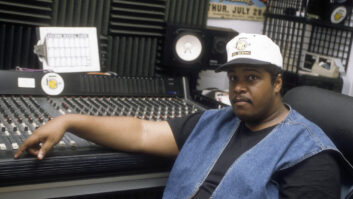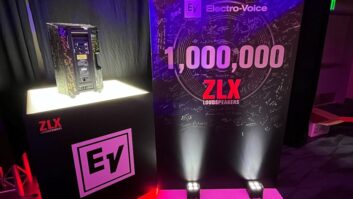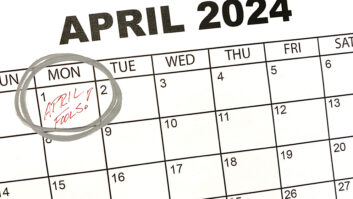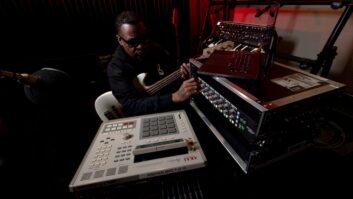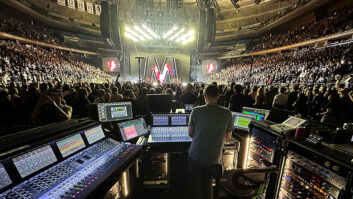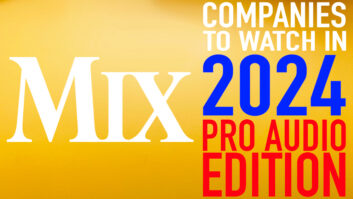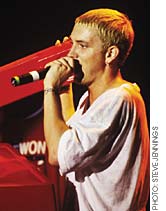
If home is where you go and they have to let you in, Detroit mayorand hip hop aficionado Kwame Kilpatrick was one of thousands holdingthe door wide open for Eminem’s triumphant return to the Motor City fortwo dates at Ford Field on July 12 and 13 this year. In a video playedbefore each show, Kilpatrick was shown phoning Eminem overseas,appealing to the rapper to come home for the summer and perform atleast once. Em put the mayor on hold briefly, then flung a doll intothe air on his hotel balcony — a la the baby-tossing MichaelJackson — and when the phone conversation continued, Eminemannounced to Kilpatrick: “For you and the city, I’ll dotwo shows.” Cue wild applause.
This rapport between mayor and superstar represented a vastdeparture from three years ago, when Eminem’s tour got into hot waterwith then-mayor Dennis Archer for trying to play a video deemed toographic by city leaders. Kilpatrick’s larger-than-life video presenceat this year’s shows — the only headlining appearances made byEminem in the U.S. this year — served to underscore how quicklypolitical climates can change. Stepping onstage at 10 p.m. both nights,Eminem faced rapturous sold-out crowds, playing to a total of 95,000fans. Quickly taking command of each evening, he served up 27 songswith seismic delivery on each date, making maximal use of his 90minutes in the limelight. With opening sets from 50 Cent and MissyElliott, plus appearances by local heroes Proof, D-12 and Obie Trice,the homecoming event made Detroit crackle and buzz with the energy ofwhat was surely the grandest hip hop spectacle ever hosted by thecity.
The set list was heavy on songs from The Marshall Mathers LPand The Eminem Show, dipping only sparingly into Eminem’s 1999debut, Luv Me. For those who caught last year’s Anger ManagementTour at the nearby Palace of Auburn Hills, this year’s shows werebasically a repeat, with the exception of songs from the 8 Milesoundtrack and a few other new stunts. Back again were productionelements reminiscent of some evil carnival, complete with a ferriswheel, a master of ceremonies, tents and a giant video screen borderedby a banner advertising psychic readings. High above the stage, garishneon lights spelled out “The Eminem Show”; in true carnyfashion, the “n” sputtered and flickered, on the verge ofgoing out.

Audio for the extravaganza was provided by Eighth Day Sound, withTroy Staton standing at FOH behind a Yamaha PM1D. Onstage, the monitorrig was handled by engineer Sean Sturge (also on a PM1D) with theassistance of tour tech Jimmy Corbin. Crew chief was Eighth Day’s MarkBrnich.
Staton has worked with Eminem for over three years but has beenpassionate about hip hop for over 25, placing him squarely in thecradle of the music’s birth back in the day. Today, with prolificstudio time under his belt, including work with Tupac, Dr. Dre, Wu TangClan, Jurassic 5 and Cypress Hill, to name just a few, as well ascountless miles logged on the road with other major acts, it’s hard tobelieve he shot out of the South Bronx on nothing more than the energyof the street.
“When I was a DJ, my first P.A. was a ShureVocalmaster,” Staton recalls from his adopted home in the LosFeliz district of L.A. “So I guess when it comes to live music,you could say I even started out on a line array system of sorts. TheVocalmaster cabinets were long, tall columns loaded with drivers. I’dhang them on the wall and the music would be bangin’.”
Still a line array proponent these days, Staton called upon EighthDay Sound’s V-DOSC inventory to produce a house array for Eminem’sDetroit shows, employing 32 full-range cabinets and 16 subs flown perside. Augmenting the low end with a wall of sound surpassing anythingemanating from Motown in the ’60s, Turbosound Flashlight Series subswere added to the sonic recipe, lined across the front of the stagelike a ground-shaking bulwark against anyone daring to get tooclose.
In theory, the Eminem show’s Detroit stage input appearedstraightforward: There were no instruments. All musical tracks camefrom the stage DJ, Green Lantern, who was outfitted with a Technicsx1200 turntable, an Instant Replay unit from 360 Systems, PioneerScratch CD player and a Vestax PMC-07 Pro D DJ mixer. With the DJ’s mixtraveling through Countryman active DIs to respective destinations atthe house and monitor consoles, the bulk of the musical tracks werestored in the Instant Replay, which was backed up on-site by a secondidentical device.
“For the Detroit shows, I had a maximum of seven voices cominginto my board at one time,” Staton relates. “That wasduring the times D-12 was onstage, combined with Em, his backing vocalsand the DJ. This certainly wasn’t like mixing a full-on rock show withguitars, a drum kit with scores of mics and whatnot, but nothing’s everas simple as it seems. Because the performers swap lead vocals everyfew bars, I need to follow the changes, putting the lead channel around5 dB above the others. I know all of the songs by heart, so Iprogrammed the level ride for the whole show verse-by-verse on thePM1D. That way, when Eminem does a verse in a specific song, forexample, I simply recall the corresponding scene, and the mix is righton.”
The stage side of the input equation included four channels ofSennheiser SKM-5000 wireless and 12 channels of Shure UHF wireless thatrelied upon SM58-equipped hand-held transmitters. “Eminem and hisbackup guy, Proof of D-12, were on the Sennheisers; for the most part,everyone else was on one of the Shure systems,” Staton explains.“The SKM-5000 works well with Em’s voice, and the Shure micstranslate well in this application for the others, as they can take thehigh SPL. Most of these guys are cupping the microphones, shouting intothem and generally dishing out hard use. The 58s can withstand thatkind of handling without so much as a whimper.”
Like any other live gig for Staton, mixing the Detroit shows was a50/50 proposition: “50 percent about the music and 50 percentabout clarity,” he says by way of further explanation. “I’mreally big on vocal clarity. The beat can be in-your-face and pounding,but if I can’t understand the lyrics, you lose half the battle with me.That’s why I continually strive to bring intelligibility to every oneof my live mixes. One of the guys from Cypress Hill told me,‘Man, this sounds just like the album. I can understand everyword.’ For me, that’s the best thing I could ever hear, becausethat’s exactly what I’m going for.”
All of the resulting attention Staton has gained while enjoying thetrip is somewhat bittersweet. “Ever since I’ve been working withEminem, my phone never rings,” he says half-seriously.“People read all of these articles and interviews, find out whatI’m doing and say, ‘Yeah, he’s dope. I know that guy, but wecan’t afford him, so let’s call so-and-so.’ My message toeveryone is, ‘Hey, I just enjoy working. Give me a call and let’sdo something. No project is too big or small.”
In the works since late last year, Eminem’s Detroit shows pulled outall stops and spared no expense. Late Friday night before the Saturdayopener, Em was still hunkered down inside Ferndale’s 54 Sound Studiomixing the video that would open his act. (In addition to MayorKilpatrick, Kid Rock made a cameo appearance in another vignette asEminem’s liquor-swilling chauffeur, blasting through the streets ofDetroit in a Hummer.) While no one can ascertain how big The EminemShow will continue to get, one thing is certain: He’s at the top of hisgame and shows no signs of slowing down. He’s currently working onalbums by D-12 and Obie Trice, as well as a disc of his own. And thefact that he can sell out stadiums…That is big.
Greg DeTogne is a regular contributor to Mix.

